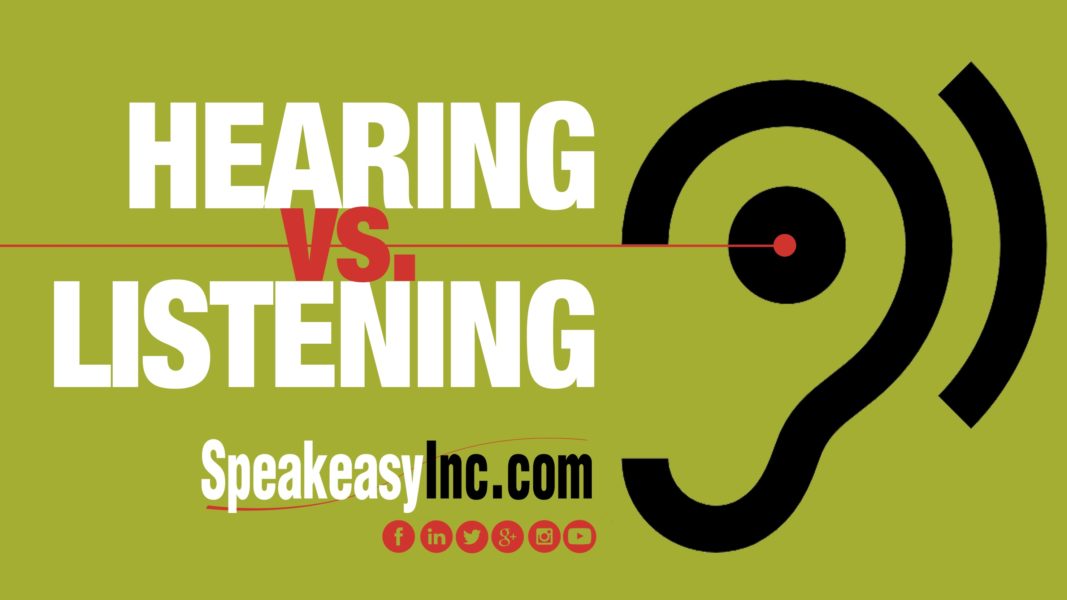
04 Jun Are You Really Listening: Hearing vs. Listening
Reading Time: 4 minutesHearing vs. Listening
Why Hearing Is Different from Listening
Hearing and listening are related but distinct processes.
Hearing is the passive act of perceiving sound using the ears. It is an automatic physiological process that does not require effort or attention.
Listening, in contrast, is the active process of making meaning from sound signals. Listening requires focused attention, intention, and conscious effort to understand.
- Hearing is involuntary, listening is voluntary
- Hearing involves only the ears, while listening engages the brain to interpret meaning
- Hearing can be passive, listening requires active effort and attention
- Hearing is about perceiving sounds, listening is making sense of sounds
- While hearing is automatic, listening is a skill that can be improved with practice
Involuntary vs Voluntary Hearing
Hearing is Naturally a Passive and Involuntary Activity
Anyone with normally functioning ear and brain activities will involuntarily hear sounds of a certain intensity. However, we do exercise control over the attention given to the sounds we hear. The person who lives beside a train track may say they never hear the trains. They do in fact hear them, but their nervous system is so accustomed to the sound they can choose to tune it out subconsciously… This is possible because that person controls their thought processes and can choose whether or not to listen.
We all know that it’s relatively easy to employ selective hearing if we’re thinking about something else, ultimately tuning out sounds around us. Even when we really try to listen to someone, our minds often wander despite our good intentions, making it easy to miss much of what was said.
How to Be an Active Listener
To become aware of how intently you must concentrate to really listen to another person, try this little exercise with one or several other people. You can choose any topic for discussion.
- Before each of you responds to another person, summarize what the other person has just said without using notes.
- Be particular about the way the other persons summarize what you said. Don’t let them off easily simply because you’re eager to continue going through the exercise.
- Was it difficult to listen to others in the group? If so, why?
- Did you have trouble formulating your reply and listening at the same time? Why?
- Do you feel that others were clear in their summaries of the message you conveyed?
- How can you tell when other members of the group are listening and when they’re only half listening?
- Did certain members of the group listen more closely than others? Why?
Based on this experience, list speaker’s behaviors that make it easy to listen to them and behaviors that make it difficult to listen. Communication is always two-way. There must be a sender and a receiver. Working to get better, more deliberate and disciplined at one skill will undoubtedly make you better at the other.
For more information about active listening, check out our White Paper, “Connecting Body Language with Active Listening.”
Master Communication with Speakeasy
Listening is the foundation for impactful communication that drives results. By honing your listening abilities, you build stronger connections and become a master communicator. If you’re ready to take your skills to the next level, check out Speakeasy’s transformative communication courses, including Talk So People Listen. This intensive 3-day program gives you the framework, skills and feedback to develop a powerful, authentic communication style. You’ll gain comfort with core skills, deeper awareness of your listeners, and greater influence. Don’t miss this opportunity to become an influential communicator who guides conversations and connects on a deeper level. Sign up now and gain the ability to speak so people listen and get results. You’ll be remembered for how you make people feel – and emerge as a leader who guides conversations and connects on a deeper human level.

